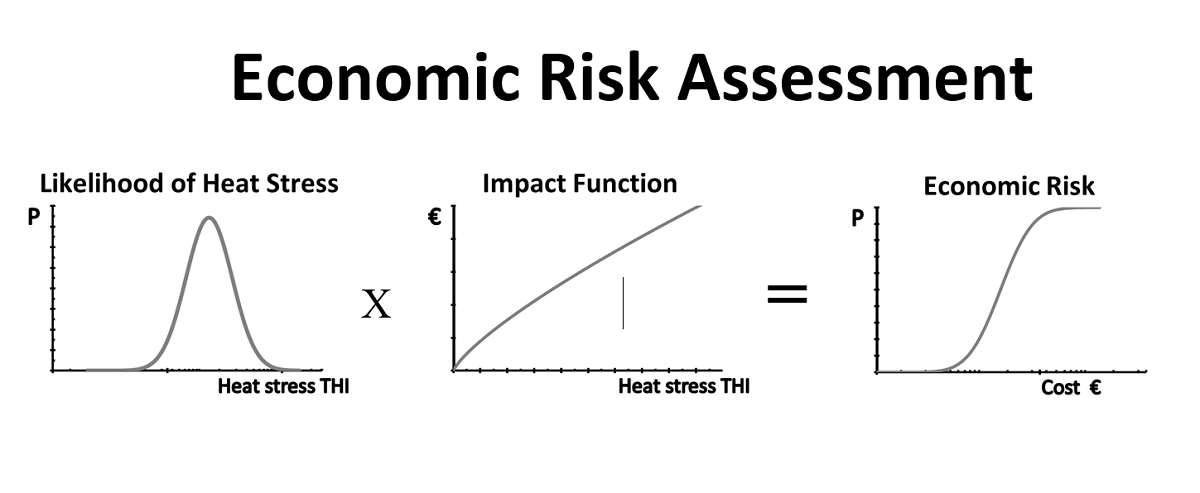In the last decades farm animals kept in confined and mechanically ventilated livestock buildings are increasingly confronted with heat stress (HS) due to global warming. These adverse conditions cause a depression of animal health and welfare and a reduction of the performance up to an increase of the mortality. To facilitate sound management decisions, livestock farmers need relevant arguments, which quantify the expected economic risk and the corresponding uncertainty. The economic risk was determined for the pig fattening sector based on the probability of HS and the calculated decrease in the gross margin. The model calculation for confined livestock buildings showed, that HS indices calculated by easily available meteorological parameters can be used for assessment quantification of indoor HS, which is so far difficult to determine. These weather-related HS indices can be applied not only for an economic risk assessment but also for a weather-index based insurance for livestock farms. Based on the temporal trend between 1981 and 2017, a simple model was derived to assess the likelihood of HS for 2020 and 2030. Due to global warming, the return period for a 90-percentile HS index is reduced from 10 years in 2020 to 3-4 years in 2030. The economic impact of HS on livestock farms was calculated by the relationship between an HS index based on the temperature-humidity index (THI) and the reduction of the gross margin. From the likelihood of the HS and this economic impact function, the probability of the economic risk could be determined. The reduction of the gross margin for a 10 year return period was determined for 1980 with 0.27 € per year and animal place and increased by the 20-fold to 5.13 € per year and animal place in 2030.

